Property from the Triton Collection Foundation Lucian Freud Follow Small Naked Portrait oil on canvas 40.6 x 55.8 cm (15 7/8 x 21 7/8 in.) Painted in 2005.
Provenance Acquavella Galleries, New York Acquired from the above by the present owner in 2007 Exhibited New York, Acquavella Galleries, Lucian Freud Recent works, 21 November - 20 December 2006, no. 13, n. p. (illustrated) Vienna, Kunsthaus Wien, Zurück zur Figur. Malerei der Gegenwart, 24 May - 7 October 2007 The Hague, Gemeentemuseum Den Haag, Lucian Freud 16 February - 8 June 2008, pp. 166 (illustrated, p. 163) Catalogue Essay Painted in 2005, Lucian Freud’s Small Naked Portrait offers a captivating glimpse into the esteemed artist’s iconic renderings of the female form. Honing his experimentations with composition and painterly application, the present painting is exemplary of Freud’s later work, displaying a sumptuously rich palette. Affording the viewer a snapshot into the intimate moment between painter and sitter, Freud’s portrait celebrates both beauty and personality without attributing a fixed identity and setting to this sublimely sensual moment. Small Naked Portrait depicts the reclining figure of a woman, stretched out en repos. The curvature of the figure’s body is emphasised through Freud’s delicate handling of light and shadow, enforcing the tenderness of the scene. The present work can be considered both a celebration and examination of the human form, Freud’s revisited fascination. The artist’s painterly dexterity is exhibited through the thicker areas of paint applied in deliberate and visible brushstrokes. Strictly economic in his use of colour, areas of warm tones lie next to the near negative space of the white ground, lending the physical form of the sitter a tender depth and volume. Freud’s recognisable style is particularly apparent through the long sweeping lines which denote the smoothness of the skin of the model’s thighs. Freud toys with the appearance of the model’s skin tone, manipulating areas of shadow to reflect individual shades ranging from deep ochre to lemon yellow. The resulting effect is a startlingly truthful representation of the figure bathed in morning light, her bodily weight anchoring our gaze at the centre of the canvas. As Freud stated, ‘I used to be so affected by where the sun had got their necks and changed the colour of their skin, and trying to get that’ (Lucian Freud quoted in William Feaver Lucian Freud , New York, 2007, p. 458). The facetted planes of colour form a rich and varied tonal schema, exemplifying the artist meticulous approach in portraying the model’s bodily form to convey a deeper sensual experience. Incorporating fleshy planes of colour surrounding the figure, Freud’s composition bleeds out to the periphery, suspending the figure in an unfixed yet heavenly setting. Invoking the classical pose of the nude sitter, Freud draws upon the odalisque, creating an image which transcends time. The pose of the figure is both intimate and arresting, a position which the artist has examined throughout his prolific oeuvre of nude portraits. Observing the personal and sexual nature of his subject matter, Freud acknowledges his debt to Gustave Courbet the present work sharing a similar depiction of the reclining female nude as evident in the French artist’s seminal painting, L'Origine du monde. Referencing his admiration for Courbet, Freud noted ‘I like Courbet. His shamelessness’ (Lucian Freud quoted in Phoebe Hoban, Lucian Freud Eyes Wide Open, London, 2014, p. 83). The sitter lies with her limbs fashioned at satisfyingly juxtaposing angles, which, while reflecting the natural pose of a person at rest, also serves as a perfectly balanced composition. Freud’s aerial perspective further strengthens the impression of intimacy between painter and sitter. This stems from a pivotal moment in the 1960s whereby Freud – who had previously always painted seated – felt an overwhelming urge to stand. This seminal moment where the artist’s perspective shifted from the level of the sitter to a predominately elevated position can be seen as a marker for the beginning of Freud’s
Property from the Triton Collection Foundation Lucian Freud Follow Small Naked Portrait oil on canvas 40.6 x 55.8 cm (15 7/8 x 21 7/8 in.) Painted in 2005.
Provenance Acquavella Galleries, New York Acquired from the above by the present owner in 2007 Exhibited New York, Acquavella Galleries, Lucian Freud Recent works, 21 November - 20 December 2006, no. 13, n. p. (illustrated) Vienna, Kunsthaus Wien, Zurück zur Figur. Malerei der Gegenwart, 24 May - 7 October 2007 The Hague, Gemeentemuseum Den Haag, Lucian Freud 16 February - 8 June 2008, pp. 166 (illustrated, p. 163) Catalogue Essay Painted in 2005, Lucian Freud’s Small Naked Portrait offers a captivating glimpse into the esteemed artist’s iconic renderings of the female form. Honing his experimentations with composition and painterly application, the present painting is exemplary of Freud’s later work, displaying a sumptuously rich palette. Affording the viewer a snapshot into the intimate moment between painter and sitter, Freud’s portrait celebrates both beauty and personality without attributing a fixed identity and setting to this sublimely sensual moment. Small Naked Portrait depicts the reclining figure of a woman, stretched out en repos. The curvature of the figure’s body is emphasised through Freud’s delicate handling of light and shadow, enforcing the tenderness of the scene. The present work can be considered both a celebration and examination of the human form, Freud’s revisited fascination. The artist’s painterly dexterity is exhibited through the thicker areas of paint applied in deliberate and visible brushstrokes. Strictly economic in his use of colour, areas of warm tones lie next to the near negative space of the white ground, lending the physical form of the sitter a tender depth and volume. Freud’s recognisable style is particularly apparent through the long sweeping lines which denote the smoothness of the skin of the model’s thighs. Freud toys with the appearance of the model’s skin tone, manipulating areas of shadow to reflect individual shades ranging from deep ochre to lemon yellow. The resulting effect is a startlingly truthful representation of the figure bathed in morning light, her bodily weight anchoring our gaze at the centre of the canvas. As Freud stated, ‘I used to be so affected by where the sun had got their necks and changed the colour of their skin, and trying to get that’ (Lucian Freud quoted in William Feaver Lucian Freud , New York, 2007, p. 458). The facetted planes of colour form a rich and varied tonal schema, exemplifying the artist meticulous approach in portraying the model’s bodily form to convey a deeper sensual experience. Incorporating fleshy planes of colour surrounding the figure, Freud’s composition bleeds out to the periphery, suspending the figure in an unfixed yet heavenly setting. Invoking the classical pose of the nude sitter, Freud draws upon the odalisque, creating an image which transcends time. The pose of the figure is both intimate and arresting, a position which the artist has examined throughout his prolific oeuvre of nude portraits. Observing the personal and sexual nature of his subject matter, Freud acknowledges his debt to Gustave Courbet the present work sharing a similar depiction of the reclining female nude as evident in the French artist’s seminal painting, L'Origine du monde. Referencing his admiration for Courbet, Freud noted ‘I like Courbet. His shamelessness’ (Lucian Freud quoted in Phoebe Hoban, Lucian Freud Eyes Wide Open, London, 2014, p. 83). The sitter lies with her limbs fashioned at satisfyingly juxtaposing angles, which, while reflecting the natural pose of a person at rest, also serves as a perfectly balanced composition. Freud’s aerial perspective further strengthens the impression of intimacy between painter and sitter. This stems from a pivotal moment in the 1960s whereby Freud – who had previously always painted seated – felt an overwhelming urge to stand. This seminal moment where the artist’s perspective shifted from the level of the sitter to a predominately elevated position can be seen as a marker for the beginning of Freud’s
.jpg)
.jpg)
.jpg)
.jpg)
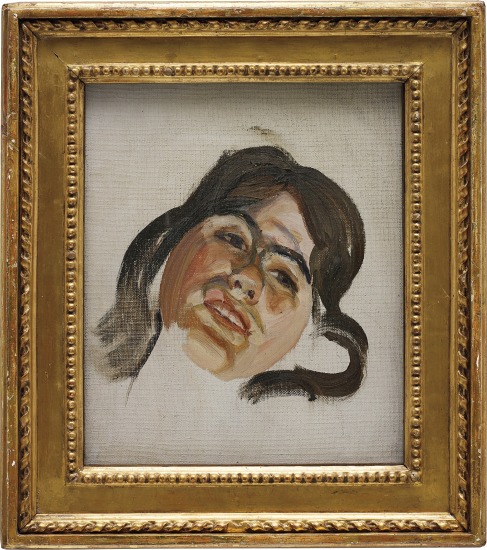
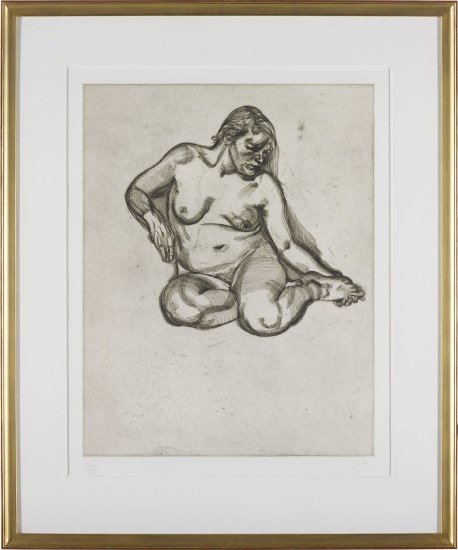

.jpg)
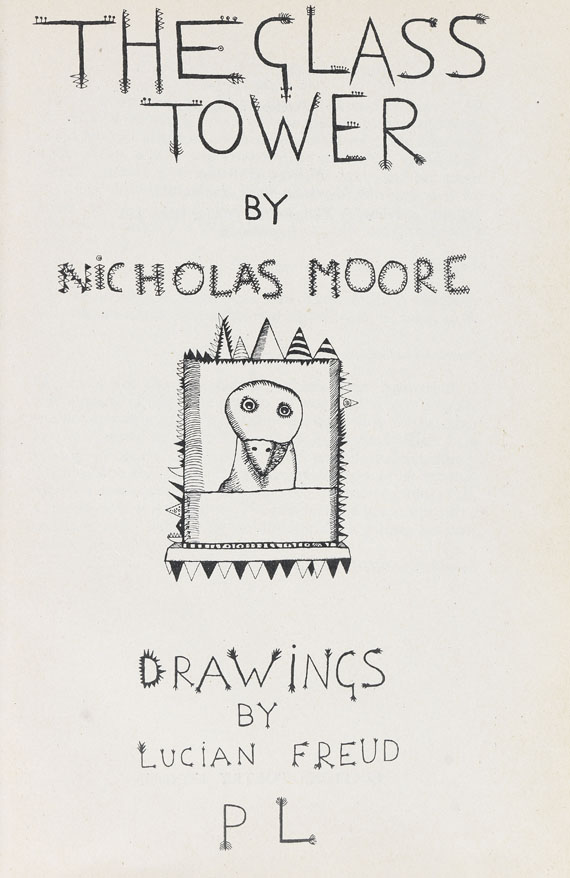
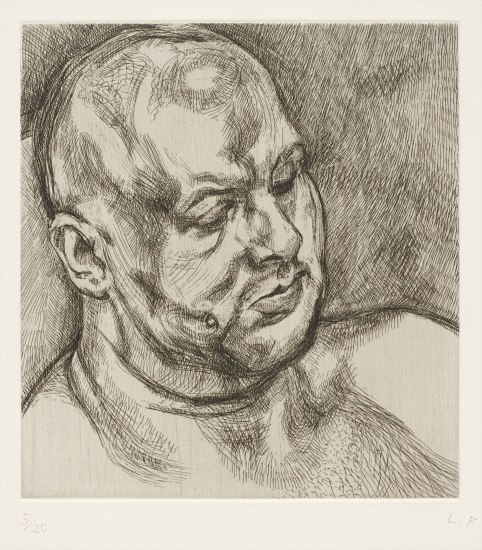
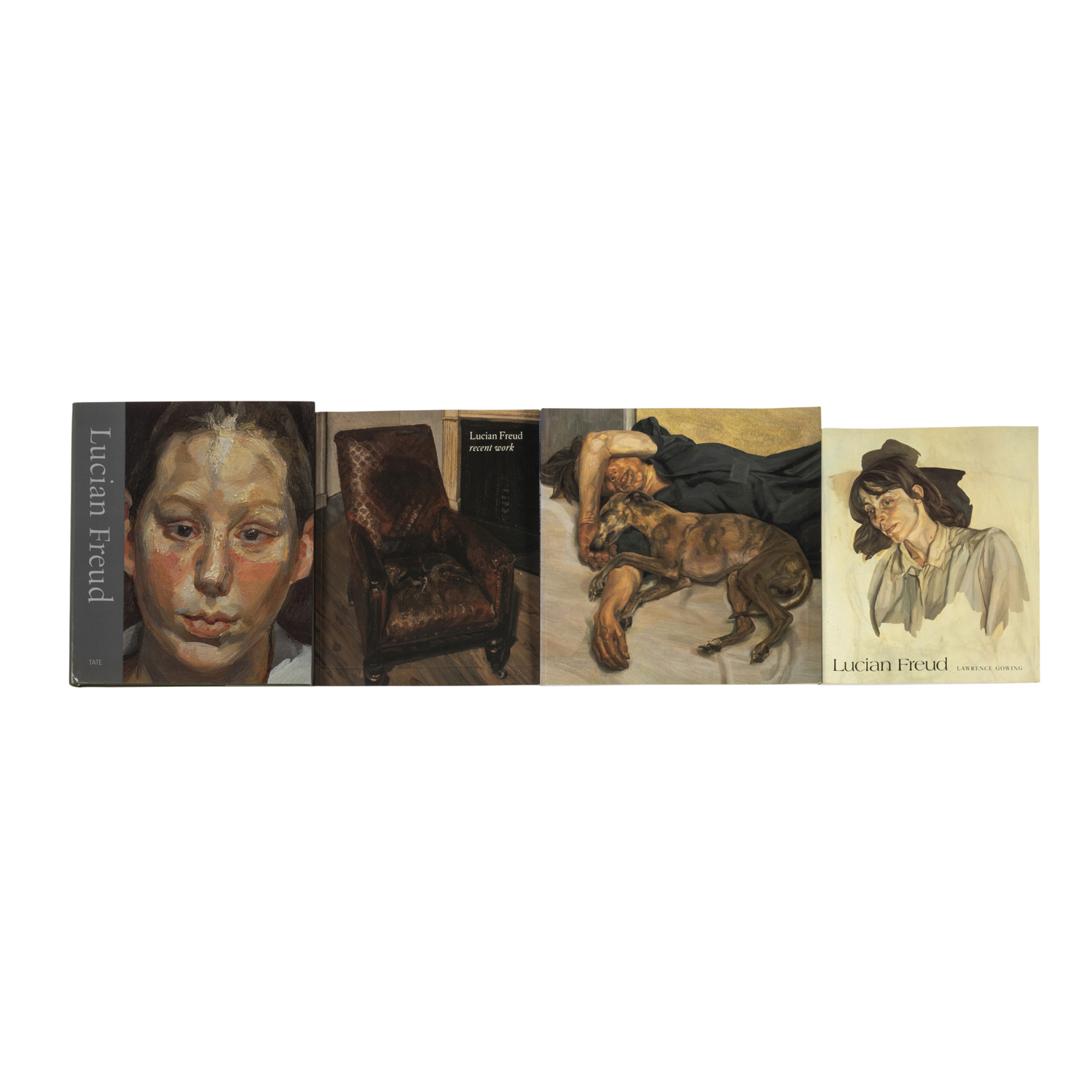


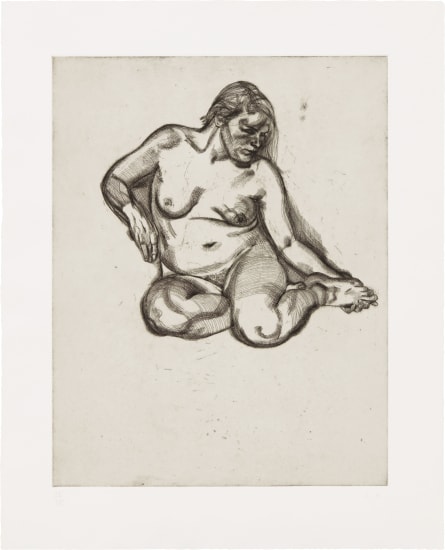

Try LotSearch and its premium features for 7 days - without any costs!
Be notified automatically about new items in upcoming auctions.
Create an alert